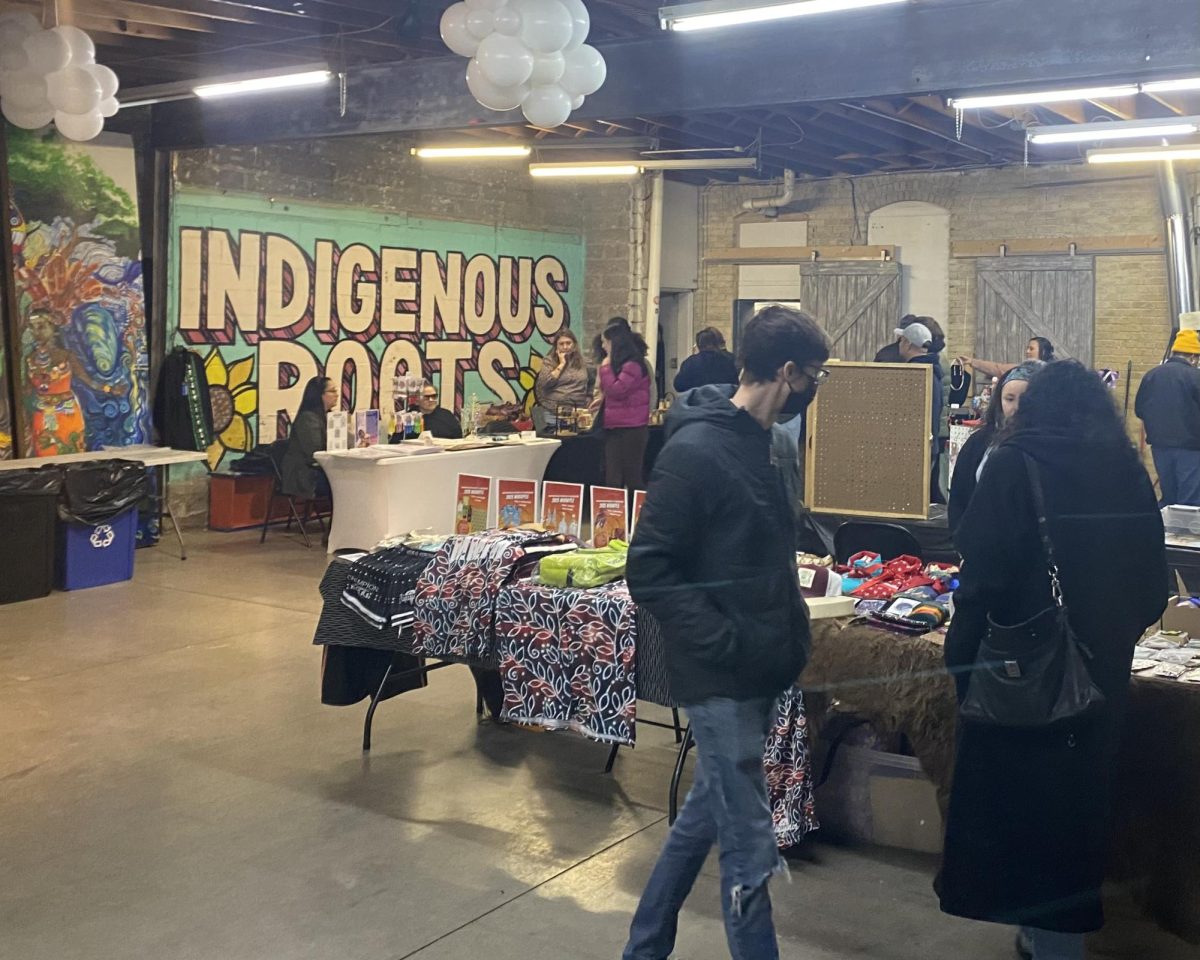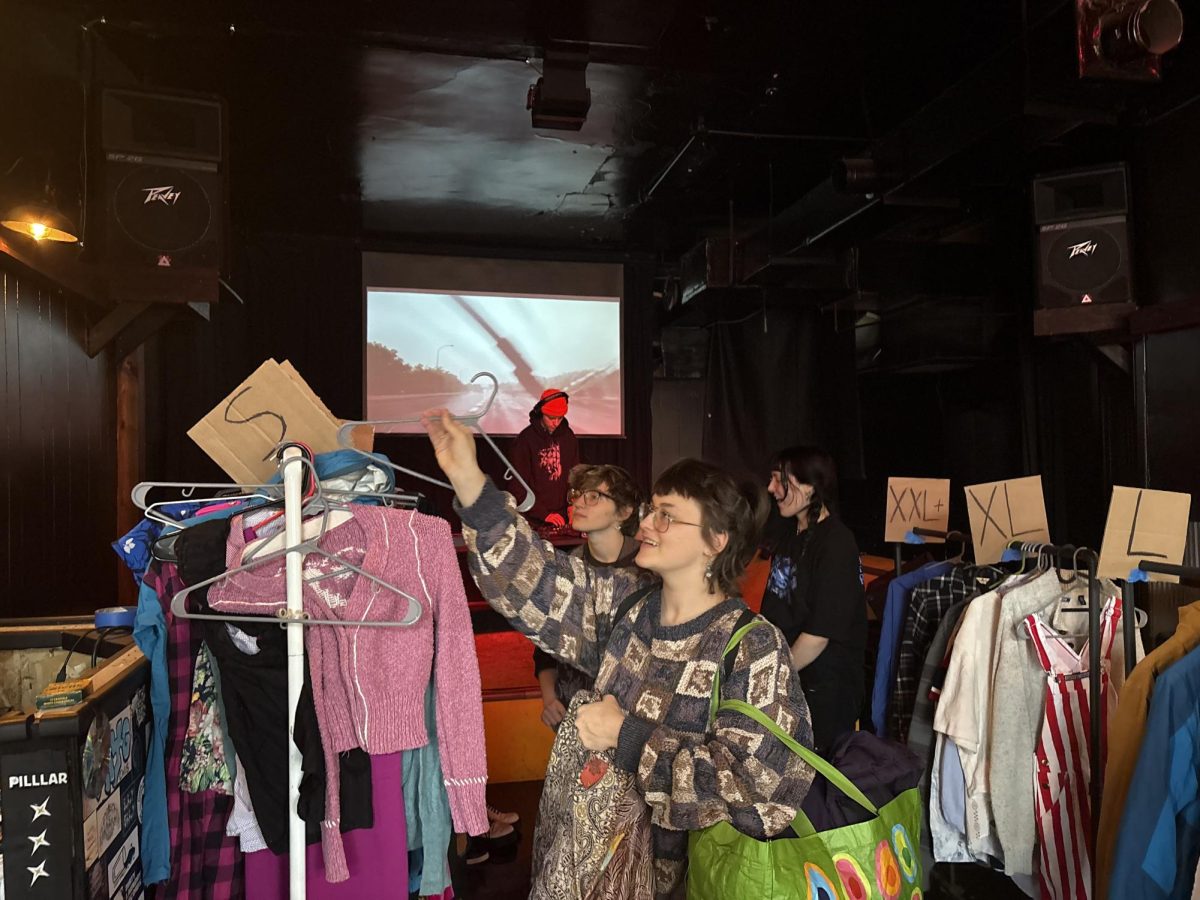Andy Warhol’s “Campbell’s Soup Can” is one of the most talked-about, written-about and thought-about symbols of pop culture ever created. Love him for his repetitive cultural critique or hate him for his overplayed 15 minutes of fame – either way, one can’t help but agree that the guy had a knack for finding the art in a can.
With the replication of a simple food item came an explosion of fame, most likely because “Warhol was both inside and outside of his art,” said Mark Pedelty, a professor in the School of Journalism and Mass Communication who teaches a class on pop culture. “He was on the outside critiquing it, but he was also inside saying that we’re really all part of that consumption.”
Taken out of context, the phrase “art of the can” would no doubt remind most of Warhol’s repeated stabs at our kitchen cabinets. But Red Bull has capitalized on those words by plastering the expression with its logo on billboards and buses across Minneapolis.
With its Art of the Can exhibit at the Weisman, as well as museums in Atlanta and Dallas, Red Bull is taking the kitsch power of the can and “de-fanging it,” Pedelty said. Unlike Warhol, who was obviously not hired by Campbell’s to create new soup advertising, Red Bull has recruited a mob of feverish freelancers who spent hours in their basements working with the company’s pliable red, white and blue aluminum cans.
“It’s inside art from the inside,” Pedelty said, pointing out that the creators were literally working for Red Bull, “so there’s no room for critique.”
Red Bull’s veiled publicity campaign is modern advertising at its best. It hardly differs from the marketing strategies of Nike or MTV, companies that focus less on the product and more on the culture, lifestyles and desires of their customers. Red Bull’s art exhibit on an urban college campus must be a conscious effort on its part to appear edgy and hip – while at the same time giving local artists their own 15 minutes of fame.
The Nov. 2 opening gala for Art of the Can at the Weisman Art Museum featured black ties, Apple Computer-equipped DJs in sunglasses, etched glass Red Bull signs marking the coat check and plenty of flowing liquor, with “Chambull” – a mixture of champagne, Red Bull and Chambord – being the drink of choice.
Red Bull Art of the Can Exhibition
WHEN: Through Sunday
WHERE: Weisman Art Museum, East Bank
TICKETS: Free, www.weisman.umn.edu
“This is really about the artists, about giving them their time,” said Nyla Hassell, a media relations manager for Red Bull. While the museum gallery served well as an occasion for artists from the Twin Cities and beyond to schmooze, it was also an opportunity for a large corporation to hand out free, highly-caffeinated beverages to teenagers accompanying their all-too-hip Minnetonka parents to an exhibit opening – and right before bedtime, no less.
Regardless of what Red Bull employees might have convinced themselves, this event was absolutely a celebration of Red Bull, if not a party for the power of a branded lifestyle in general.
That a corporation can so easily wear the mask of a museum curator speaks not only to how clever advertising campaigns have become, but to how blind we are as consumers.
For the contest, artists were asked to create art – be it a sculpture, wall-hanging or item of clothing – from Red Bull cans. Artists submitted model airplanes, maple trees, a bass guitar and a wedding dress, all in the name of Red Bull.
“Some Often Wondered From Where Her Artistic Energy Flowed” by Kim Graff was a female figure with wire hair and a lunchbox torso, opened slightly to reveal a heart-shaped Red Bull logo – the answer to the question. Kym Ohna made a bikini titled “Bullsuit,” with silver and blue flames on the bosom and the Red Bull logo where a brand tag might be.
University first-year student Stewart John Van Cleve seemed to bend the rules by incorporating Coke, Pepsi, Sunkist, Schwepps, Welch’s and Red Bull cans in his piece “Can You Tell a Lady from the Moon?” He didn’t seem to have a problem with the judges for his use of material, but he said he was almost disqualified “because they thought I was making a reference to Sept. 11.” (Although where the judges got the 9/11 idea is unclear.)
Though most works of art made use of the silver, blue and red, there remained a couple seemingly unbranded pieces that shed a glimmer of hope on the public space.
“Cabull San Lucas,” by Patrick Griffith, was a postcard-like piece that used about 75 cans to create a simple tropical scene. “You can only get so much blue from each can,” Griffith said, “so I had to use that many.”
Miranda McGuire’s life-sized cheetah, titled “Record: 72 mph,” used the inside of the can for bright silver fur, and the beast’s spots were the signature deep Red Bull blue. Besides that, the Cheetah had Red Bull-red eyes and a nose that declared, “Lightly Carbonated, Serve Chilled.”
The participating artists had to supply their own Red Bull cans, meaning either buying a few cases at Costco, diving into dumpsters, asking bars and restaurants or pleading with Red Bull to help them out. “We’d give them a few cans here and there,” Hassell said, “but, for the most part, it was up to them.”
Van Cleve said that even though Red Bull sent him three cases, he bought extra Red Bull to stay up and finish his piece. “I had to ask for a few more cans to finish, so they sent me a couple more used cans that were just filled with gross Red Bull festering mess,” he said.
Adam Brackney, who submitted “Rockem Sockem Red Bull” figurines, said he got the cans from buying and drinking them like he normally does. “But I have to say that,” he said sarcastically.
So not only was Red Bull hoping to profit from the attention that these artists drew, but they were also treating these contestants as customers. In the end, the biggest piece that used the most cans won. Dale Busta scored a trip to Art Basel in Switzerland for his 12-foot “MapBull Tree” made from over 2,000 cans, complete with Red Bull grass, birds, nests and a sap bucket.
Every artist at the opening event seemed enthusiastic about Red Bull’s mission. “I think it’s really cool,” said Brackney, the “Rockem Sockem” artist. “We can take a Red Bull can and turn it into something personal, something artistic.”
Yet, there seemed to be a complete ignorance of the concept and definition of “art.” It’s a question that looms ceaselessly over art classes and philosophic discussions and will never be unanimously answered. Most would agree, however, that the bottom line for art is, and must be, the artist’s voice.
Red Bull threw dollar bills and logos into that mix, misconstruing the viewers’ and artists’ perception of who, exactly, this was all for.
“Any contest that one would enter has guidelines and rules,” Hassell defended. And the rules were simple: Make art from a can.
Yet anyone who entered this contest automatically rid themselves of the privilege to comment on Red Bull itself. Since art is all about context, had someone submitted a “Red Bull Can” in the style of Warhol, the judges and viewers would probably have taken it at face value and nothing more. It is still inside “art” from the inside, and it is still just corporate marketing.
“You couldn’t use the (Red Bull) logo to create any art that criticizes Red Bull,” Pedelty said. “Aesthetically, it’s really cool, but so is a lot of pop culture, and that doesn’t make it art.”







